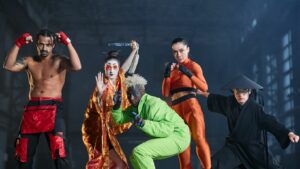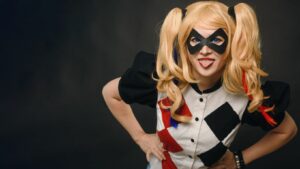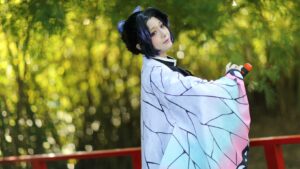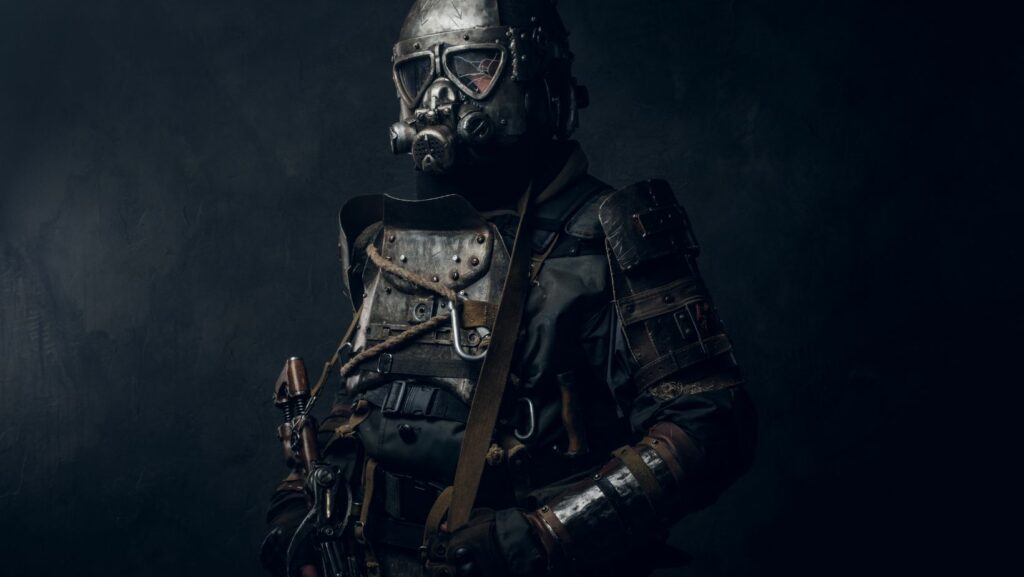Ever wondered about the vibrant, imaginative world of cosplay? It’s not just about dressing up. Cosplay, a portmanteau of “costume” and “play”, is a unique, immersive experience that allows enthusiasts to embody their favorite characters from movies, books, video games, and more.
This fascinating subculture transcends simple imitation. It’s a creative outlet, a form of self-expression, and for many, a passionate community. In the upcoming sections, we’ll dive deeper into the captivating realm of cosplay, exploring its origins, its impact, and why it’s more than just a fancy dress party. Stay tuned to unravel the magic behind the masks and the stories behind the costumes.
What is a Cosplay
 Engaging with cosplay is about storytelling, developing skills, and becoming part of a supportive community. This section deepens the understanding of the history and evolution of the practice.
Engaging with cosplay is about storytelling, developing skills, and becoming part of a supportive community. This section deepens the understanding of the history and evolution of the practice.
Cosplay, originating in Japan, has roots dating back to the 1980s. Convention attendees began to dress up to honor and emulate their beloved characters, creating what’s known as cosplay today. This niche pastime gained traction, steadily becoming a thriving global phenomenon. Over the years, this practice has developed and expanded, incorporating elements from various cultures and forms of media, amplifying its nuances and depths.^[source]. The application of makeup varies greatly, from subtle shading and highlighting, to the intense and theatrical—an example being the intricate detailing on Darth Maul’s face. Makeup is not just a cosmetic enhancement in cosplay; it’s expressive, transformative, and essentially, a kinetic canvas that breathes life into the impersonation.
Elements of Cosplay
 Cosplay exemplifies a combination of unique elements, each playing crucial roles in creating the desired persona. The extent of transformation often entails crafting, language, performative skills, and makeup artistry.
Cosplay exemplifies a combination of unique elements, each playing crucial roles in creating the desired persona. The extent of transformation often entails crafting, language, performative skills, and makeup artistry.
Crafting, alongside costume fabrication, forms the bedrock of cosplay. Enthusiasts, drawn from diverse backgrounds, indulge in the process of crafting their own costumes. With a focus on accuracy, affection, and affinity, they reproduce iconic costumes of their chosen characters, invoking substance as well as accessories, through a variety of materials. This is not simply an exercise in construction, but an exploration of artistic creativity and character connection. The bleach-blonde wig and red tracksuit of Naruto Uzumaki, for example, are not simply put on, but meticulously crafted and worn with a sense of ownership.
The process of transformation runs deeper than donning a costume. Makeup, often striking and defining, proves instrumental in accentuating attributes and emulating features of specific characters, pushing the boundaries of physical resemblance.
Cosplay Across the Globe
Cosplay events now grace stages worldwide, creating borderless connections. Different cultures in turn, shape cosplay’s evolution, reflecting arrayed practices and beliefs.
Among the numerous cosplay events, San Diego Comic-Con International, New York Comic Con, and Germany’s Leipzig Book Fair stand out. For instance, San Diego Comic-Con International, held annually in California, hosts a Masquerade costume competition that attracts participants and spectators globally. Similarly, New York Comic Con lures enthusiasts with its Eastern Championships of Cosplay, a renowned costume contest. Leipzig Book Fair, not only celebrates published works but also pays tribute to cosplay showcasing craftsmanship and performance skills in its cosplay competition.
| Event | Place | Highlight |
| San Diego Comic-Con International | California, USA | Masquerade costume competition |
| New York Comic Con | New York, USA | Eastern Championships of Cosplay |
| Leipzig Book Fair | Leipzig, Germany | Cosplay competition |
The Role of Cosplay in Different Cultures
 Through its transformative scope, cosplay manages to cross cultural boundaries. Japan, birthplace of cosplay, uses it significantly in its pop culture and fan conventions. In contrast, European cosplayers usually merge historical influences, stylizing costumes of characters from renaissance or medieval eras. Meanwhile, cosplayers in the United States often favor characters from comic books or Hollywood franchises, reflecting the country’s entertainment industry influence. Brazilian cosplayers, reflecting their country’s carnival tradition, showcase an exuberant carnival-esque feel in their costumes. Thus, cosplay doesn’t merely replicate; it creates a fusion of different cultures, embodying the uniqueness of each region.
Through its transformative scope, cosplay manages to cross cultural boundaries. Japan, birthplace of cosplay, uses it significantly in its pop culture and fan conventions. In contrast, European cosplayers usually merge historical influences, stylizing costumes of characters from renaissance or medieval eras. Meanwhile, cosplayers in the United States often favor characters from comic books or Hollywood franchises, reflecting the country’s entertainment industry influence. Brazilian cosplayers, reflecting their country’s carnival tradition, showcase an exuberant carnival-esque feel in their costumes. Thus, cosplay doesn’t merely replicate; it creates a fusion of different cultures, embodying the uniqueness of each region.
This niche pastime gained traction, steadily becoming a thriving global phenomenon. Over the years, this practice has developed and expanded, incorporating elements from various cultures and forms of media, amplifying its nuances and depths.^[source]

